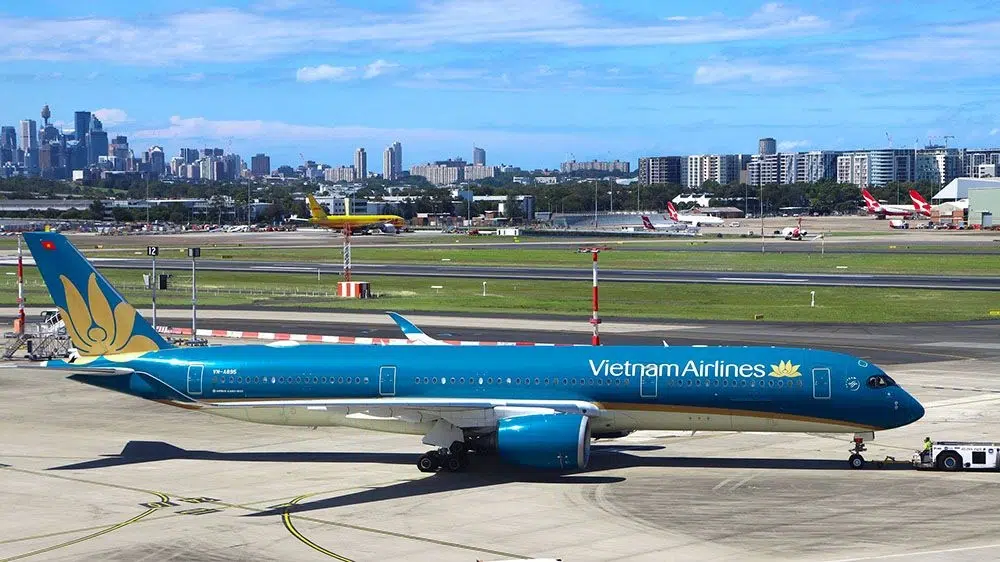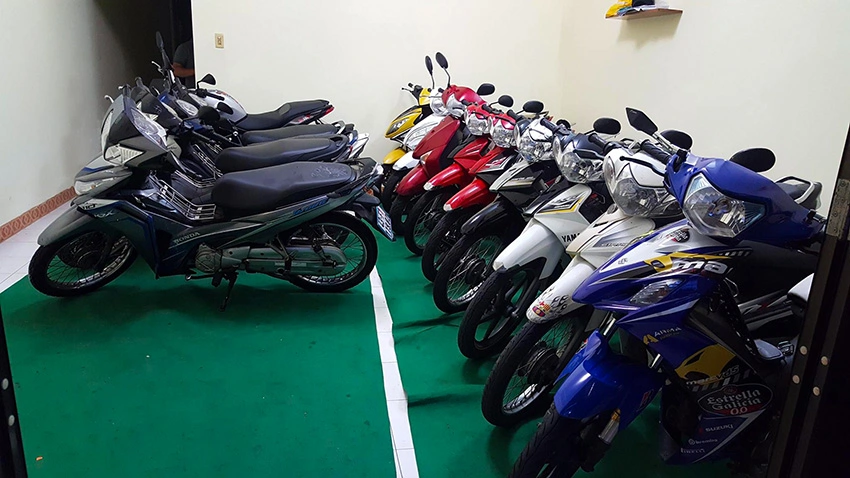How to get to Hoi An? Many routes lay ahead – by air, by rail, by road. Picking the right way was key. This guide would reveal the secrets. The most efficient paths to reach Hoi An. Cost-effective for the frugal.
List of Contents
- 1. How to Get to Hoi An
- 2. How To Get To Hoi An By Train
- 3. How To Get To Hoi An By Plane
- 4. How to Get to Hoi An by Private Car
- 5. Motorbike to Hoi An
- 6. Taxi to Hoi An
- 7. Da Nang To Hoi An by Grab
- 8. How to Get to Hoi An: Travel Tips
- 9. Useful Vietnamese Phrases for Tourists
- 10. Conclusion about How to Get to Hoi An
1. How to Get to Hoi An

Before learning the specifics on how to get to Hoi An, understand there are two primary travel routes: direct and indirect.
Indirect Route to Hoi An:
You will first arrive in Da Nang, then continue your journey to Hoi An which is 30km away. The best transportation options to reach Da Nang from distant cities are by plane or train.
Refer to the article “How to Get to Da Nang” for costs. It clearly outlines requirements for international tourists to have a proper driver's license to legally ride motorbikes in Vietnam.
Direct Route to Hoi An:
For those already in Da Nang and wanting to travel directly to Hoi An, the options are by motorbike or renting a private car. This direct route is only suitable for those starting from Da Nang, not feasible for those coming from abroad or distant cities like Hanoi/Ho Chi Minh City due to:
- Motorbikes being unsafe and unhealthy for long distances.
- Renting a private car is very expensive for long journeys.
So what are the costs and best means to get to Hoi An from Da Nang? The following transportation details will guide you.
2. How To Get To Hoi An By Train

While no railways directly serve Hoi An, you can still enjoy a scenic train journey to reach Hoi An from Hanoi or Ho Chi Minh City first. Lonely Planet praises Vietnam's rail routes for countryside and coastal vistas: 8 of the world's most incredible train journeys.
To get to Hoi An by train, take a train to Da Nang or Tam Ky station, then transfer to Hoi An by taxi or private car – an indirect but worthwhile experience. Frequent trains run from Hanoi and HCMC to Da Nang with average travel times to Hoi An around 15-20 hours.
Book tickets ranging $17-$52 on 12Go Asia or via Hoi An travel agents based on your preferred cabin comfort for this memorable journey to Hoi An. Despite the duration, a train allows you to admire scenery en route safely.
3. How To Get To Hoi An By Plane

For a quicker route on how to get to Hoi An, flying is ideal. Since no airport exists in Hoi An itself, book a flight to Da Nang International Airport first.
Airlines like Vietnam Airlines, Bamboo Airways, Jetstar Pacific and Vietjet offer direct flights to Da Nang from major Vietnamese cities like Hanoi, Ho Chi Minh, Da Lat and Nha Trang. Flight tickets are typically around $47 plus taxes for the 1hr 15min journey to Da Nang.
From Da Nang airport, a short commute will bring you to your final destination of Hoi An.
After arriving in Da Nang, you can use the following types of means to move to Hoi An:
4. How to Get to Hoi An by Private Car

For convenience and cost-efficiency when wondering how to get to Hoi An, especially from Da Nang, taking a private car is one of the best transportation options. Perfect for families or groups, here's a Hoi An travel guide on using private cars:
4.1. Cost-Efficiency:
Private car services usually offer a flat trip rate compared to other Hoi An transportation options like taxis, Grab, or Hoi An bus services. This pricing can lead to notable savings, allowing travelers to save between 20–40%.
4.2. Rate Overview:
- 4-seat cars: Approximately $10.22 or 250,000 VND for a one-way trip.
- 7-seater cars: Roughly $12.27 or 300,000 VND for a one-way journey.
- 16-seater cars: Around $18.40 or 450,000 VND for a single trip.
4.3. Advantages of Private Cars:
Flexibility: Unlike Hoi An taxi fares or rideshares, you have more control over your schedule with a private car, especially if planning Hoi An day trips from Da Nang or other side excursions.
Comfort: Compared to other Da Nang to Hoi An transport modes, private cars provide a more comfortable journey. Additionally, travelers only share with others in their group.
Privacy: This option is perfect for those prioritizing privacy, enabling passengers to discuss, relax, or enjoy the ride without other unknown passengers.
Safety: Renowned private car services emphasize passenger safety, ensuring their drivers are proficient and the cars are in optimal condition.
4.4. Booking:
Travelers can book a private car through various platforms like hotel concierges, Klook, or GetYourGuide. Given the Da Nang to Hoi An distance, booking in advance, especially during peak travel seasons, is crucial to guarantee availability.
4.5. Tips for a Smooth Journey:
Clear Communication: Ensure you specify a pick-up location in Da Nang and a destination in Hoi An. It's beneficial to have addresses in both English and Vietnamese.
Day Trips: If you're contemplating Hoi An day trips, converse with the service provider beforehand. They might provide package deals or insights to enrich your travel experience.
Check Reviews: Before confirming your booking, peruse reviews from fellow travelers. This can offer insights into the dependability and caliber of the service you're contemplating.
To wrap up, for those puzzling over how to get to Hoi An, a private car stands out as an exemplary choice for group travelers or those desiring a seamless, plush journey from Da Nang to Hoi An. Not only can you economize over time, but the flexibility and privacy of a personal vehicle enhance the travel experience. Safe travels!
5. Motorbike to Hoi An

An adventurous way to travel to Hoi An is riding a motorbike from Da Nang, popular with younger crowds seeking unique things to do.
5.1. Route:
The most common course takes you along the coastline, passing through beautiful beaches like My Khe and Non Nuoc. The journey along the Da Nang – Hoi An road will follow the Hoang Sa road in Da Nang. This route has beautiful scenery and is relatively easy to follow. This route is scenic and reasonably straightforward.
5.2. Distance and Travel Time:
The distance between Da Nang and Hoi An is roughly 30 km (about 19 miles). Depending on your speed and the number of stops you make, a motorbike can take anywhere from 45 minutes to 1.5 hours.
5.3. Precautions:
Ensure you have a proper helmet.
Check the motorbike's brakes, lights, and horn before starting your journey.
If you're not experienced, be cautious, as Vietnam's traffic can be pretty chaotic.
Familiarize yourself with Vietnamese road rules.
Avoid traveling in heavy rain or at night if you're not accustomed to the local driving conditions.
5.4. Renting a Motorbike:
Many shops in Da Nang rent motorbikes. It usually costs between 100,000 to 200,000 VND (roughly $4 to $8) daily.
You'll likely need to leave a deposit or a passport copy.
Ensure you get a motorbike with enough power if traveling with a pillion or having a lot of luggage. 125cc is a common choice.
5.5. Scenic Stops:
Marble Mountains (Ngu Hanh Son): A cluster of five marble and limestone hills with pagodas and caves.
My Khe Beach: A beautiful beach to relax and take a break.
An Bang Beach in Hoi An: Another gorgeous beach and a nice place to end your motorbike journey.
5.6. Parking in Hoi An
- Ancient Town is pedestrianized, so park outside
- Pay small fee at designated parking areas
Motorbikes allow you to explore at your own pace. But prioritize safety, follow local road rules, and consider hiring an experienced rider if needed.
For recommended motorbike rentals in Da Nang, see the “How to Get Around Da Nang” guide.
6. Taxi to Hoi An

Taking a taxi from Da Nang to Hoi An is one of the most convenient transportation methods for those exploring these two popular destinations in Central Vietnam. Here's a guide to help you navigate this journey on how to get to Hoi An by taxi:
6.1. Distance and Travel Time:
The distance between Da Nang and Hoi An is approximately 30 km (about 19 miles). A taxi ride usually takes 45 minutes to an hour, depending on traffic conditions.
6.2. Fare Estimate:
A taxi ride from Da Nang to Hoi An typically costs between 390,000 VND and 450,000 VND (roughly $16 to $18.5). However, prices might vary depending on the taxi company, time of day, and current traffic conditions.
6.3. Choosing a Taxi:
SM Green Taxi is a good, environmentally friendly choice. This is the electric taxi company of Vin Group. In addition, Mai Linh and Vinasun are the two most prestigious taxi companies in Vietnam. They are known for their honest drivers and reliable service.
SM Green Taxi operates in Da Nang with GreenCar standard taxi service and LuxuryCar luxury taxi service. GreenCar uses VinFast VF e34 and VinFast VF 5 Plus cars with the typical Cyan blue color, while LuxuryCar uses VinFast VF 8 cars with luxurious original paint colors.
Avoid unmarked taxis without a visible company name/logo, as these might be unofficial taxis that could overcharge or scam passengers. It's advisable to request the taxi driver use the meter, or you can negotiate a fixed price before starting the journey.
6.4. Booking a Taxi:
You can hail a taxi on the street in Da Nang.
Hotels and resorts often offer taxi-calling services for their guests.
Some taxi companies offer hotline numbers or apps for booking.
6.5. Tips and Considerations:
Make sure the taxi driver understands your destination before you start the journey.
It's always a good idea to have your destination (such as your hotel in Hoi An) written in Vietnamese to show the driver.
Use a map app on your phone to track the route and ensure you're heading in the right direction.
While tipping is rare in Vietnam, a small tip is appreciated if you receive good service.
6.6. Arrival in Hoi An:
Hoi An's Ancient Town has pedestrian-only zones during certain times, so your taxi may drop you off at the entrance. From there, you should walk to your specific destination within the Ancient Town.
Taxis offer a convenient and relatively fast way to travel between Da Nang and Hoi An. Ensure you choose a reputable taxi company and are clear about the fare or the meter usage to avoid misunderstandings. If budget isn't a concern, taxis are a straightforward way to start your Hoi An travel itinerary.
7. Da Nang To Hoi An by Grab

Da Nang and Hoi An are two popular tourist destinations in Central Vietnam. They are located relatively close, and many travelers opt to move between them during their visits. If you're thinking of using the ride-hailing service “Grab” for how to get to Hoi An from Da Nang, here's what you need to know:
7.1. Distance and Travel Time:
The distance between Da Nang and Hoi An is roughly 30 km (about 19 miles). A Grab ride usually takes 45 minutes to an hour, depending on traffic conditions.
7.2. Fare Estimate:
A GrabCar ride from Da Nang to Hoi An could cost anywhere from 4-seat car: $13 – $14.5 (320,000 VND – 350,000 VND), 7-seat vehicle: $14 – $17 (350,000 VND – 420,000 VND) one way. However, prices vary based on demand, time of day, and ongoing promotions.
7.3. Booking:
To book a Grab:
Download and open the Grab app on your smartphone.
Input your pick-up location in Da Nang and your destination in Hoi An.
Choose your preferred type of vehicle.
Confirm the ride, and wait for your driver to arrive.
7.4. Advantages:
Using Grab can be convenient for several reasons:
It provides a set price (though subject to dynamic pricing during peak times).
You can track your journey on the app.
It can be safer than hailing a random taxi, as all drivers undergo checks by Grab, and rides are tracked.
Multiple payment methods are available, including cash or linked credit cards.
7.5. Alternatives:
If Grab isn't available or if you're looking for other options:
Local Taxis: Many taxi companies in Da Nang can take you to Hoi An.
Private Car or Shuttle Services: Many hotels and travel agencies in Da Nang offer personal car services to Hoi An. This might be slightly more expensive, but it can provide a more personalized experience.
Public Bus: Public buses run between Da Nang and Hoi An. They're the cheapest option but can be less convenient.
8. How to Get to Hoi An: Travel Tips
When planning your journey to Hoi An, a picturesque town in Central Vietnam known for its well-preserved Ancient Town and vibrant lantern-lit evenings, consider these travel tips:
Da Nang is Your Gateway
The nearest central transportation hub to Hoi An is Da Nang. Whether flying, taking a train, or arriving by bus, you'll most likely pass through Da Nang.
Airport Transfers
If flying into Da Nang International Airport, pre-book a shuttle or private car for a smoother transfer to Hoi An. Many hotels in Hoi An offer transfer services, which can be more reliable than hailing a taxi.
Travel Light
Hoi An Ancient Town's streets can be crowded and pedestrianized during certain times. If you're staying within this area, navigating without heavy luggage is easier.
Consider the Train
If you're traveling from cities like Hanoi or Ho Chi Minh City, the train journey, while longer, offers picturesque views of the Vietnamese coastline.
Bus Services
There are sleeper buses that operate between major Vietnamese cities and Da Nang. They're a budget-friendly option, but ensure you choose reputable companies for a safer and more comfortable journey.
Local Transportation
Once in Da Nang, apart from taxis, consider using apps like Grab for transportation to Hoi An. They offer fixed prices and can be more reliable.
Travel by Motorbike
If you're adventurous, renting a motorbike can allow you to explore at your own pace. However, be prepared for Vietnamese traffic and ensure you have the necessary permits and insurance.
Read the article: How to get to Da Nang. This article provides precious information about the means of transportation to get to Da Nang—the knowledge you need to get to Hoi An smoothly.
Know the Weather
Central Vietnam, including Hoi An, has a distinct rainy season from September to January. Plan your travel accordingly if you wish to avoid heavy rains.
Stay Updated:
Check local news or updates about the condition of roads, especially during the rainy season, as there can be occasional floods.
Cultural Respect:
While Hoi An is tourist-friendly, remember it has deep cultural and historical significance. Dress modestly when visiting temples and be respectful of local customs.
Accommodations:
It's wise to book your accommodations in Hoi An in advance, especially during peak tourist seasons. Many places offer free bicycles for guests, a great way to explore the town. Read the article: Where to stay in Hoi An.
Safety First:
Always keep your belongings secure and be wary of pickpockets in crowded areas. Also, when booking transportation, prioritize safety over cost.
By keeping these tips in mind, you'll ensure a smoother and more enjoyable journey to Hoi An. The town is a delightful blend of history, culture, and charm waiting to be explored. Safe travels!
9. Useful Vietnamese Phrases for Tourists
Hello – Xin chào (Sin chow)
Goodbye – Tạm biệt (Tam byet)
Thank you – Cảm ơn (Kam uhn)
Yes – Có (Koh)
No – Không (Khom)
Sorry/Excuse me – Xin lỗi (Sin loy)
How much? – Bao nhiêu? (Bow nyew?)
Too expensive! – Mắc quá! (Mack kwaa!)
I don't understand – Tôi không hiểu (Toy khom hyeu)
Where is the bathroom? – Nhà vệ sinh ở đâu? (Nya vay seen o dow?)
I'm lost – Tôi bị lạc (Toy bee lak)
Food – Thức ăn (Thook an)
Water – Nước (Nook)
Help! – Giúp đỡ! (Zoop doh!)
Hotel – Khách sạn (Khack san)
My name is… – Tôi tên là… (Toy ten la…)
Do you speak English? – Bạn có nói tiếng Anh không? (Ban koh noy teeng Ang khom?)
10. Conclusion about How to Get to Hoi An
“How to Get to Hoi An” – As we've navigated through the myriad of transportation options, it's clear that reaching Hoi An can be both convenient and cost-effective, tailored to your preferences. Whether you choose the quickness of a flight, the scenic route of a train, or any other mode, Hoi An is accessible for all types of travelers and budgets.
Choosing the correct mode of transportation can enhance the travel experience. With the insights provided, you can make an informed choice that ensures value and comfort.
Remember, the article Hoi An Travel Guide can provide you with all the necessary knowledge about this place. As a resident, my writing will be helpful for you. Safe travels!
FAQs






